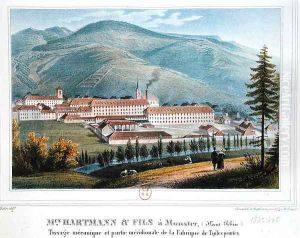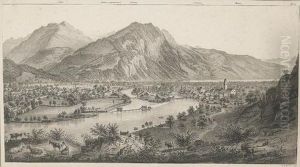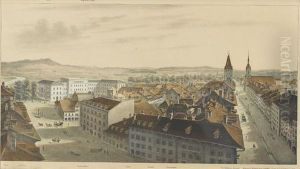Rudolf Huber Paintings
Rudolf Huber was a Swiss painter born on April 17, 1668, in Basel. He was one of the most important Swiss painters of his time, noted for his portraits and historical paintings. Huber's work is characterized by its Baroque style, with a strong sense of realism and attention to detail, which was influenced by his travels and studies in various European art centers.
Huber was initially trained by his father, who was also an artist, before embarking on his own artistic journey. He further honed his skills by traveling to Paris to study under the French painter Hyacinthe Rigaud, who was famous for his portraits of Louis XIV. This experience had a significant impact on Huber's style and technique, particularly in his approach to portraiture.
Throughout his career, Rudolf Huber maintained a successful workshop in Basel, where he produced a large number of religious works, historical scenes, and portraits for private patrons, churches, and public buildings. His portraits, in particular, were highly sought after by the wealthy bourgeoisie and aristocracy, as they captured not only the physical likeness of the sitters but also their social status and character.
Despite his success, Huber's works are not widely known today, and only a limited number of his paintings have been preserved. Nevertheless, his contributions to Swiss art during the Baroque period remain significant, and his style exemplifies the transition from late Baroque to early Rococo in Swiss painting. Huber died on February 27, 1748, in Basel. His legacy is preserved in various Swiss museums and collections, offering insight into the cultural and artistic milieu of his time.


